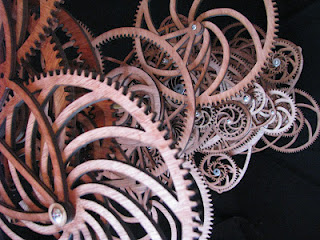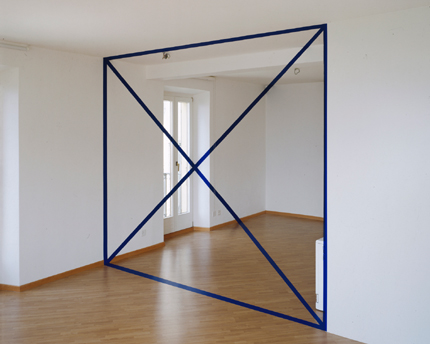Feeling a little the worse for wear today 
Happy invoicing!

- britishproblems - Excellent sub-Reddit on, well, British problems: e.g. "I don't live in London so most of the news is utterly irrelevant to me", "They only had medium sliced bread left in the shop" and "My tutting wasn't loud enough."
- Fractal Clockwork - "The fractal computer is comprised of layer upon layer of self-similar primitive computer networks, implemented with wooden gears and movements." Brent Thorne's wooden computer looks really cool:

- Baby Cage 1953 - British Pathé newsreel clip: "In this video we see several shots of Mrs Morris with her baby girl, Sallie, preparing her for an outing. Sallie's brother Paul scampers about. Mrs Morris opens the window to reveal a cage on the outside, and puts Sallie inside it for some fresh air. They are several stories up so it looks a little alarming! Paul gets in too. View from below as we look up at the cage and children. Paul and Sallie wave to their Dad who is coming down the street."
- Halcyon Days - James Hague's book of interviews with early computer game authors such as Eugene Jarvis (Defender), Chris Crawford (Eastern Front 1941) and Ed Rotberg (Battlezone): "It is now 2002 and Halcyon Days has run its commercial course. I'm putting it on the web because I still think the information in the book is fantastic and inspiring, and because much of it cannot be found elsewhere."
- QArt Codes - Russ Cox presents a mathematical technique for incorporating bitmap images in QR codes in such a way that the code remains valid, as opposed to previous methods which relied on error correction: "Reed-Solomon encoded messages can be XOR'ed: if we have two different Reed-Solomon encoded blocks b1 and b2 corresponding to messages m1 and m2, b1 ⊕ b2 is also a Reed-Solomon encoded block; it corresponds to the message m1 ⊕ m2. (Here, ⊕ means XOR.) If you are curious about why these two properties are true, see my earlier post, Finite Field Arithmetic and Reed-Solomon Coding."
- B to the F: The Novelization of Back To The Future - "'Back To The Future: A Robert Zemeckis Film' (this seems to be the title of the book, judging by the cover) is a fascinating book for several reasons. One, the author was working off of the screenplay, but clearly a version of the screenplay that was not the final one. Two, the author (George Gipe) seems to not have had an editor, as there are sections of the book that are crazy loco. And three, after putting out this book in 1985 to coincide with the release of the film, he was stung to death by bees (this can happen) and was dead in 1986. The other two novelizations were written by a different author and are not nearly as insane/interesting."
- Pixar Online Library - Collection of papers describing techniques and algorithms Pixar have developed, dating from 1982 to this year.
- IRA vs. Al Qaeda: I Was Wrong - "Yesterday I finally wrote something that’s been bothering me for about ten years: The fact that Al Qaeda can’t be as big and bad as it’s made out to be, because its whole design violates every rule of guerrilla organization... The majority, the media, whatever you want to call it—maybe “the background noise” is the best way to describe it—kept saying that Al Qaeda was the biggest baddest thing in history and even though I grumbled and held back a little, I bought into that idea way more than I should, knowing the way I did that everything about their set-up pointed to a flash in the pan—which is what they’ve turned out to be." Interesting examination of the supposed threat of Al Qaeda by Gary Brecher.
- Walk the Prank: Secret Story of Mysterious Portrait at Pentagon - "In a Pentagon hallway hung an austere portrait of a Navy man lost at sea in 1908... The portrait of "Ensign Chuck Hord," framed in the heavy gilt typical of government offices, may be the greatest—or perhaps only—prank in Pentagon art history. "Chuck Hord" can't be found in Navy records of the day. It isn't even a real painting. The textured, 30-year-old photo is actually of Capt. Eldridge Hord III, 53 years old, known to friends as "Tuck," a military retiree with a beer belly and graying hair who lives in Burke, Va."
- Felice Varini - According to Wikipedia, "Felice paints on architectural and urban spaces, such as buildings, walls and streets. The paintings are characterized by one vantage point from which the viewer can see the complete painting (usually a simple geometric shape such as circle, square, line), while from other view points the viewer will see ‘broken’ fragmented shapes." You'll have seen some of his work before, but here's his online gallery.

Happy invoicing!







Comment